Point Remove Creek's slow, warm currents dawdle in the lazy hot days of mid-summer. The creek bottom's damp air dawdles, too. It's stagnant, amplifying smells of life and death, and the soured odor of death is strong today. Metallic green and blue bottle flies swarm and cover the corpse of a shortnose gar lying on the silty creek bank. The mucous coating of a fish is irresistible to flies.
The gar was a victim of fiberglass arrow. A thumb-sized hole punched through its midsection is clear evidence. Just a few feet from the dead gar, I catch glimpses of living gar gliding through quiet brown water.
More gar carcasses litter the slippery creek bank and each carries the same mark of death. But there's not a fly on the other bodies. Flies can't break down the scales, and the slimy mucous has been gone for days. The bodies are dried husks hollowed by maggots that, from a distance, look as though they could reanimate. The scales and bony heads filled with needles hold their form in the elements and through the fly swarms. Mummies of Point Remove Creek they are: the embodiment of ancient secrets passed down from the age of "terrible lizards," embalmed by sun and flies. They look misplaced. Gar carcasses stacked on the creek bank don't look natural. The gar's life measured in seasons of survival—fighting the torrents in a flood, gulping air in bath-warm stagnant pools, evading the blue heron, predating the shad—is balanced on the thin edge of existence. Death is always just a fin stroke away. But the mass of punctured bodies left to rot is disturbing.
The gar's thick interlocking scales were no match for a heavy fiberglass arrow. Ironically, the scales of the largest member of Lepisosteidae, the alligator gar, were once used as arrow points by Native Americans. But I doubt Native Americans left carcasses to rot on creek banks. There's too much protein underneath the rough and toothy exterior of a gar for that. And it shows a lack of respect for ancient processes and our elders. Gar are our elders by a wide margin. They've been around for over 100 million years. Some of the gar's more famous prehistoric contemporaries were Tyrannosaurus rex and Velociraptor. Gar evolved at a time when giant reptiles ruled the air and sea, and grasses, yes grasses—wheat, corn, everything you spend all summer mowing—would not evolve for another 30 million years. Gar are older than grass. Homo sapiens' earliest primate ancestor was still 65 million years away when the first gar pumped water through its gills.
Small gar break the skim in a pool just off the creek's main channel, pulling my thoughts back to the present. We local anglers call these pools gar holes. Gar are about the only type of fish than can live in them during the parched summer months. A sluggish eddy points to pool and current melding, and gar hang around the periphery of the eddy looking, smelling, feeling for an easy meal. Gentle plips and violent splashes signal gar feeding, or more likely, gar breathing. Despite the gills, gar can and do breath air when they need to. An air bladder functioning as primitive lung is a family feature. In low oxygen waters gar porpoise, take quick pops or sometimes gently rise to the surface and inhale.
Watching little shortnose gar in the creek suck air is intriguing. Watching four-foot longnose gar do this in the Arkansas River is fascinating. But neither experience compares to a friend's encounter with an alligator gar on the White River in eastern Arkansas. For those unfamiliar, alligator gar are the kings of predatory freshwater fish. They can reach 10 feet in length and weigh more than 300 pounds. My friend wasn't sure about the exact dimensions of the alligator gar he encountered. He said he first noticed just a dark shape that grew more massive by the second as it rose from the depths like a modern day Cetus. Suddenly, all the movies about killer sharks, crocodiles and sea monsters rushed in with vivid detail as the prehistoric beast hovered like a saturated log just under the surface next to his suddenly tiny aluminum boat. After a seconds-long slurp of river bottom air, the gar submarined, pectoral fins rolling figure eights and broad tail casually rippling the surface as it sank. I dream of such an encounter, but the little shortnose gar in Point Remove will do for today. They remind me that what I can see is only a glimpse of life under the waters.
Point Remove Creek is a semi-popular fishing destination for the rougher and poorer crowd, folks that can't afford a boat and don't mind muddy shoes and mosquito welts in exchange for a stringer of catfish. Catfish are a delicacy enjoyed by all classes and by all means. But as you can tell from the decomposing bodies on the creek bank, nobody eats gar. Hell, I've never eaten gar, and I've caught and killed far more than my share. I shot gar in number and tossed their ancient forms to the mud. "Food for the raccoons," is how I justified my actions, and maybe the raccoons rejoiced. But more likely it was just the flies. Though the gar's inherent toughness probably allowed them to live out of water for hours after being impaled by an arrow, ol' Sol eventually wore them down and the flies feasted on gar slime.
With a fishing arrow nocked, gar were my preferred target. They often suspended just below the surface, shadows in the murky waters I stalked. In clearer waters their cryptic camouflage and penchant for absolute stillness—perfect ambush hunting technique—made them motionless targets if you could at first determine that they weren't a water-logged stick or branch jutting from submerged brush. Even motionless, the smaller gar were challenging to hit. The combination of cylindrical bodies and diffraction of light led to a lot of misses at first, but eye and hand quickly came up with a solution, and I was deadly.
Alligator gar are rare in my local waters, but longnose gar—some nearing five feet in length—swarm below Dardanelle Lock and Dam on the Arkansas River near my home. This was the bowfishing equivalent of big game hunting and a giant longnose was challenging. You mostly saw them as they porpoised, appearing on the surface for only a moment as a greenish-silver flash, and then diving only to resurface in an unknowable location. Skill had bowed to luck if an arrow found the mark, but when the heavy shaft sunk in the fight was on—the ferocity of a primitive survivor wrapped in a near bullet proof vest, armed with a mouthful of stilettos, and I was tethered to it by an arrow and length of braided Dacron
Canst thou draw out leviathan with an hook? Or his tongue with a cord which thou lettest down?
No, but I can damn sure skewer him with an arrow.
There was, and is, a primal satisfaction in being lethal with a bow. The twang of the string followed by hissing cord, the surprisingly delicate arrow splash, and then the frenzied thrashing of a fluorescent arrow nock signaling a hit. It was a primal feeling of accomplishment. It was symbolic. It was metaphorical—"food is secured. I will not go hungry tonight." The chemical rush is a holdover from our true origins, from a time before grocery stores and restaurants. A time when our survival depended on personal and thoughtful killing.
Brought to boat, a gar was guaranteed to slice your hand or finger with razor gill plates. Or sometimes you didn't even know how it cut you. Just suddenly there was blood, your blood, mixed with gar blood and slime. We even used heavy work gloves to handle fish and still we were cut. And for the fight, the gar was unceremoniously knocked on the head and thrown into a barrel with other unlucky fishes. And here again is where I cheated both the dead gar and myself—after an all night excursion we would dump the carcasses in a remote location on my farm, "food for the raccoons," I said again. But again, all I ever saw eating on a dead gar was flies. I never thought about the gar, about their place as apex predators fine-tuned for the complex river ecosystems they inhabited. I did not think of the gar as anything but targets for my amusement. I did not think.
The question about whether this might be wrong came from an unexpected source. My wife, who had always supported my outdoor pursuits and activities, caught me off guard one day. I was discussing a gar kill from the previous night's bowfishing when she asked, "Have you ever thought about the killing?" Of course I thought about the killing.
"No, I mean have you ever thought about why you kill them?"
I had not.
But I thought about it the next time a gar swam within range of my arrow. I shot the gar anyway. It was only about a foot and a half long, just another shortnose gar. The gar came to hand with little fight and lay still in the mud as a pink cloud vanished in the shallows. A trickle of red channeled through armor plating near its savage eye and dripped onto the mud. I thought of my wife's words again as blood splattered into the creek and became one with the water.
The arrow had not penetrated the gar's body cavity; it struck and held in only muscle, and I was able to work it loose with minimal damage. And then, after a gentle nudge, the gar was back in its element. With a few lazy tail strokes it became part of Point Remove Creek again. That was my last gar by arrow.
In the decade or so since then, I have thought of that gar often. I think of it every time I look at the bow and shotgun here in my writing nook. I think of it when I put the sights on an animal. I think of it every time I push my fork into a morsel of meat. I think of it as I watch the gar today, likely distant relatives, in Point Remove Creek. I think of it as I see their dried bodies half buried in silt.
Of course gar die. Everything dies. But dead gar piled on the creek bank somehow seem outside the circle and its exquisite tragedy. The act of killing without thought or purpose runs counter to natural order. It may be one of the few true evils in this world, and that's why the words of my wife struck like the dagger of truth, why dead gar left to the elements bother me. Killing an animal cannot ever be simply good or bad. It's a nuanced act hinging on motive and intent, tactic and ethos. The taking of a life hangs on a timeless code and, within its complexity, I'm okay with being a killer. But I'm no longer okay with a pointless death. I'm haunted by thoughtless kills that litter my past.
A salty wet T-shirt clings to my shoulders. The real temperature nears triple digits. Flies still buzz around the freshest bodies as an afternoon sun bakes the creek bottom. The older hollowed gar carcasses look like parched fossils in the desert, mere feet from their watery home but forever separated by time.
Before leaving Point Remove I say a prayer for the gar and for the creek, and I say a prayer for the archer who left the fish gasping for liquid life here on its banks. I say a prayer for enlightenment and understanding for that archer. And I say a prayer for mercy when enlightenment comes.








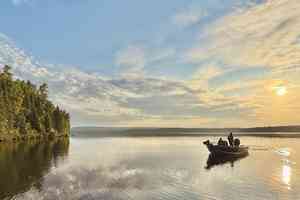



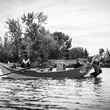
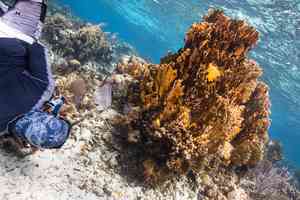


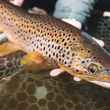



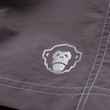

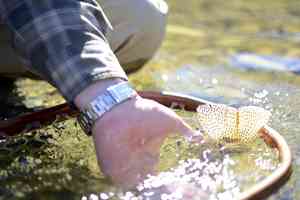



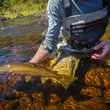



Comments
Jack Keller replied on Permalink
I am in complete agreement. I've taken a few gar and I've eaten a lot of gar balls but killing without reason is so wrong and on so many levels.
David Backstrom replied on Permalink
No reason to waste gar they are great eating. Other rough fish have a place in my garden as fertilizer for my poor soil.
Tyler W replied on Permalink
I really enjoyed that. Fishing is how I access the unknown. But, killing long lived fish (enmass) is not required. Much better to match wits with the fish, appreciate it alive and only take enough for dinner. I hope you've found some good gar fishing techniques.
Jeff replied on Permalink
Well written. Your reflections are similar to those I've had. Killing wildlife for the sake of killing for many is a regretful aspect of youth. Killing to eat is another matter, but I still ask myself if it is a necessity when food is abundant and affordable a few blocks from home.
Michael Cravens replied on Permalink
Beautiful story that mirrors my own thoughts
Pages